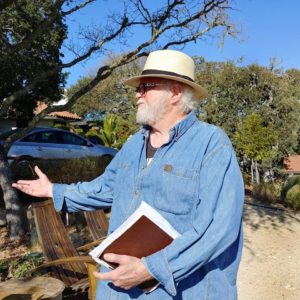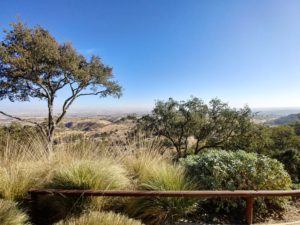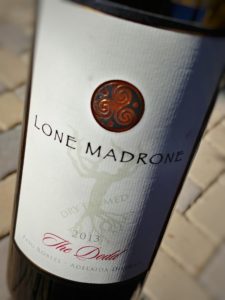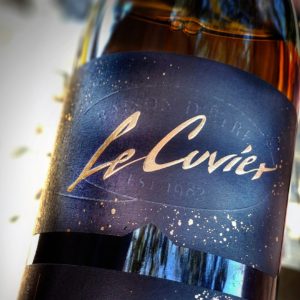 For many, the past is something we run away from… try to change everything that was considered odd, unpopular – any outlying characteristics and those things that we couldn’t change we would try to diminish or hide. Once we get settled into ourselves, those layers from our past start to seep through, sometimes bringing dysfunction or simply being a lost opportunity to share something special with the world if we don’t embrace them as often times, the best thing we can bring to our journey is that unique set of circumstances that brought us to this point in our lives.
For many, the past is something we run away from… try to change everything that was considered odd, unpopular – any outlying characteristics and those things that we couldn’t change we would try to diminish or hide. Once we get settled into ourselves, those layers from our past start to seep through, sometimes bringing dysfunction or simply being a lost opportunity to share something special with the world if we don’t embrace them as often times, the best thing we can bring to our journey is that unique set of circumstances that brought us to this point in our lives.
Le Cuvier
John Munch is certainly a local legend in the Paso Robles wine scene in California. Napa Valley is known for a few big personalities that shaped Napa wines which took the world by storm but Paso Robles has had a longer journey to get any type of recognition and John Munch with his Le Cuvier winery has been happy to stay small with around “4,500 cases being made” that are sold directly to consumers. Despite Le Cuvier being founded in 1983, John first bought the property where his winery, cellar and tasting room is located back in 1978.
 John has a fascinating past. He was born in Costa Rica and grew up in various Central American countries; eventually, after a few academic pursuits, ended up getting an English literature graduate degree in West Saxon poetry. This old English background is evident not only in the descriptions of his wines but also in how his wines express themselves with power yet remain elegant. He was even a general contractor for a time, working for a group of people who renovated old Victorian houses in San Francisco and he eventually used those house building skills to build a home on a plot of land he bought in ’78 in the western section of Paso Robles, which was pretty desolate at the time, with his late French wife. Even though the house was not completed until 2008 he created a wine revolution way before that time.
John has a fascinating past. He was born in Costa Rica and grew up in various Central American countries; eventually, after a few academic pursuits, ended up getting an English literature graduate degree in West Saxon poetry. This old English background is evident not only in the descriptions of his wines but also in how his wines express themselves with power yet remain elegant. He was even a general contractor for a time, working for a group of people who renovated old Victorian houses in San Francisco and he eventually used those house building skills to build a home on a plot of land he bought in ’78 in the western section of Paso Robles, which was pretty desolate at the time, with his late French wife. Even though the house was not completed until 2008 he created a wine revolution way before that time.
 John’s late French wife had a “brother who was a scoundrel,” always looking for new ways to make money and this brother-in-law was representing a group from Champagne who wanted to bottle sparkling wine in California following the lead of Moët establishing Domaine Chandon in Napa Valley. So John would make sparkling wine for them from vineyards in western Paso Robles that had lots of limestone in the soil and a cooler climate while taking weekend winemaking courses at U.C. Davis. John said with his big, rich laugh that the one complaint he kept getting from the Champagne producers was that the acid was too high in the wines, which was ironic as Champagne wines are ideally highly acidic. Then John worked under the brand name Adelaida Cellars with partners starting to experiment with the range of varieties and vineyards in Paso and he would start his own smaller winery project, Le Cuvier. In 1999 he left Adelaida after being bought out by his partners and he gave his full attention to Le Cuvier and his new role as “Wine Herd, a shepherd to the ‘feral beasties’ that accompany the finest fruit from the finest vineyard into the winery” with his now business partner Mary Fox.
John’s late French wife had a “brother who was a scoundrel,” always looking for new ways to make money and this brother-in-law was representing a group from Champagne who wanted to bottle sparkling wine in California following the lead of Moët establishing Domaine Chandon in Napa Valley. So John would make sparkling wine for them from vineyards in western Paso Robles that had lots of limestone in the soil and a cooler climate while taking weekend winemaking courses at U.C. Davis. John said with his big, rich laugh that the one complaint he kept getting from the Champagne producers was that the acid was too high in the wines, which was ironic as Champagne wines are ideally highly acidic. Then John worked under the brand name Adelaida Cellars with partners starting to experiment with the range of varieties and vineyards in Paso and he would start his own smaller winery project, Le Cuvier. In 1999 he left Adelaida after being bought out by his partners and he gave his full attention to Le Cuvier and his new role as “Wine Herd, a shepherd to the ‘feral beasties’ that accompany the finest fruit from the finest vineyard into the winery” with his now business partner Mary Fox.
 As I sat outside at the beautifully set table across from John at Le Cuvier, he regaled my group with wonderfully descriptive stories as we tasted his selection of wines and hors d’oeuvres that is available to anyone who calls for an appointment. He then handed over the floor to his head winemaker, Clay Selkirk, who was, at one time, studying Greek and Roman literature. “John was a big influence on my father; my family has a very small winery, Cayucos Cellars” Clay started out and continued, “and like John, my schooling didn’t touch on this [winemaking] at all except that I was a classics major in Athens and all the Greeks and Romans drank a lot of wine.” Clay was called back to Paso Robles by his father when his brother broke his femur bone as help was needed at the winery and he ended up at Le Cuvier with John, which seemed ideal.
As I sat outside at the beautifully set table across from John at Le Cuvier, he regaled my group with wonderfully descriptive stories as we tasted his selection of wines and hors d’oeuvres that is available to anyone who calls for an appointment. He then handed over the floor to his head winemaker, Clay Selkirk, who was, at one time, studying Greek and Roman literature. “John was a big influence on my father; my family has a very small winery, Cayucos Cellars” Clay started out and continued, “and like John, my schooling didn’t touch on this [winemaking] at all except that I was a classics major in Athens and all the Greeks and Romans drank a lot of wine.” Clay was called back to Paso Robles by his father when his brother broke his femur bone as help was needed at the winery and he ended up at Le Cuvier with John, which seemed ideal.
I was feeling in that moment that winemakers in Paso Robles are interconnected in a way that I hadn’t experienced before and in that moment another key figure in Paso Robles wines was mentioned, Neil Collins, as Clay spoke about Neil working with his father in construction back in the day while also juggling a winery job with John at Adelaida Cellars.
 As if he was beckoned by his name being spoken, Neil walked up to the sun soaked lunch table with his son Jordan in tow and a big Cheshire Cat smile appeared on John’s face, shaded by his beige panama hat. Before Neil could get more than a few words out, John launched into his introduction of Neil stating that he was “from Bristol, England and he was originally in training as a chef because he couldn’t get through normal school because he was f**king up too much.” He amused himself as he continued with his favorite Neil story, talking about his time in the restaurants working in a “basement kitchen and how they would have this vent fan that would lead out to the passage of the sidewalk and when they would see people coming, they would throw up boiled cauliflower up into the fans.” Then John motions to Neil’s son and noted Neil “showed up with this character in diapers and he was driving this old Volvo that was held together by baling wire” as Neil had sent John a letter saying how he wanted to work for Adelaida Cellars before he visited; Neil quipped that he only sent a letter to Adelaida as it was the first listed in the yellow pages.
As if he was beckoned by his name being spoken, Neil walked up to the sun soaked lunch table with his son Jordan in tow and a big Cheshire Cat smile appeared on John’s face, shaded by his beige panama hat. Before Neil could get more than a few words out, John launched into his introduction of Neil stating that he was “from Bristol, England and he was originally in training as a chef because he couldn’t get through normal school because he was f**king up too much.” He amused himself as he continued with his favorite Neil story, talking about his time in the restaurants working in a “basement kitchen and how they would have this vent fan that would lead out to the passage of the sidewalk and when they would see people coming, they would throw up boiled cauliflower up into the fans.” Then John motions to Neil’s son and noted Neil “showed up with this character in diapers and he was driving this old Volvo that was held together by baling wire” as Neil had sent John a letter saying how he wanted to work for Adelaida Cellars before he visited; Neil quipped that he only sent a letter to Adelaida as it was the first listed in the yellow pages.
But John seriously drew attention to the fact that once he saw the baling wire holding the car together, he knew Neil would be able to work at a small winery as “you have to be able to do everything and not just be in a lab” as well as Neil being a chef let John know that he didn’t have issues with long hours. John and Neil even reminisced about them finding a high school chemistry textbook from Australia to know more about what sulfur did at different stages of the winemaking process and as John gleefully exclaimed, “then we threw it out and rewrote the rules” as they both believe in minimal intervention in the winery and John said he only added sulfur dioxide once in his winemaking (26ppm after first racking for those science nerds out there!) at a stage when it would bind with potential off-putting aromas in the wine so the wine could “blossom”.
Tablas Creek
Neil could not help but chime in, “It was a little bit deeper than that…” Neil started in ’92 with John and he said there was not that much around back then in regards to tourism or infrastructure for visitors and that has greatly changed although there is still that Wild West, small community feeling in Paso. Neil noted that “five years with John was like re-inventing the wheel and we knew it was crazy as it was revolutionary at the time because there wasn’t much going on here at that point” and then he said his life would change forever when American importer Robert Haas decided to start Tablas Creek in Paso Robles bringing in partner Château de Beaucastel. Tablas Creek started using the winery at Adelaida in 1994 which Neil jokingly said he thought was a horrible idea because he was English and Tablas Creek’s partner was the French winery Château de Beaucastel – lots of history of a love/hate relationship. But the Perrin family and especially Robert Haas couldn’t have been more generous. Neil and John beamed with delight when talking about all the cases of Burgundy and Beaucastel they received from Robert, and Neil eventually traveled to Beaucastel to learn more about their process where they worked with native yeasts for fermentation (some more stuff for the wine nerds), something both John and Neil practice today. After a few years of making wine at Adelaida, Tablas Creek built their own winery in 1997 making Neil their winemaker and he is currently the executive winemaker and vineyard manager.
Lone Madrone
That fateful first day that Neil showed up at Adelaida to meet John to interview for a job, John had him taste a bunch of wines. “He didn’t have the wine speak but he had the nose” John noted, thinking back to that meeting. Neil said that moment was the unknowing instigator for the creation of his own winery Lone Madrone. Neil reflected on that moment, “And so in 1996, when we first tasted through those wines and he said he liked my notes on that very first tasting, the wine that I pulled out as being something special was a Cabernet Sauvignon from a single vineyard” and Neil pointed out that is was a bad idea to blend this special plot; shortly after that tasting, he bought grapes from the vineyard owner of that plot and he started making his own wine. The vineyard was known as Lone Madrone by locals and so he asked the vineyard owners if he could use it as his wine’s name and they told him yes. But the plan was never for Neil to have his own label, yet his “inability to focus on any single thing and the excitement of all the vineyards popping up” led him to expand into other wines under the Lone Madrone label such as Rhône varieties and Paso’s famous Zinfandel grape.
 Neil has a deep love for dry farmed vineyards as well as the limestone soils that are prevalent on the western side of Paso Robles that he uses for his Lone Madrone which is a love shared by John; Le Cuvier wines are almost purely sourced from dry farmed plots with the exception of 5% (some Viognier and Chardonnay). When it comes to dry farmed vineyards, Neil described his personal preference for them by stating, “to me that is the greatest expression of land” and each dry farmed vineyard is vastly different as the climate can drastically change within a mile in the west side of Paso Robles.
Neil has a deep love for dry farmed vineyards as well as the limestone soils that are prevalent on the western side of Paso Robles that he uses for his Lone Madrone which is a love shared by John; Le Cuvier wines are almost purely sourced from dry farmed plots with the exception of 5% (some Viognier and Chardonnay). When it comes to dry farmed vineyards, Neil described his personal preference for them by stating, “to me that is the greatest expression of land” and each dry farmed vineyard is vastly different as the climate can drastically change within a mile in the west side of Paso Robles.
Pentimento
The lineup of wines from John and Neil are certainly memorable, as is their passion for art, literature, food and the passion driving them to keep living up to their own ideals. But one wine was a great symbol for what made these two men very special, it was Le Cuvier Pentimento. According to John, the term Pentimento “is an art term where an artist will take a canvas that they bought that they already painted and white it out so that artist can paint over it and through time the original art bleeds through.” In a way, these men’s passions and journeys bleed through their wines giving a stronger sense of transparency over glory.
Curiosity Ignites Passion Not Glory
I think that if John and Neil dreamt of being star wine producers from the beginning, putting forth a plan that they needed to achieve by certain markers in life, their wines would not be as multidimensional as they are today. Each man came to wine from a different path and their previous skills of being good with their hands, love for literature and cuisine as well as no fear for the hard work or failure, laid down a foundation in Paso Robles that would encourage other producers to open their minds to seemingly unconventional practices. They are each examples that you don’t need to figure out from day one what you wanted to be for the rest of your life in order to achieve something significant… and sometimes being on an unorthodox path, guided by nothing else but a strong sense of curiosity, can be the way to best unlock the potential of a place since people typically take the risks they have to take when freed from the desperate need for glory, to liberate a new truth that hasn’t been discovered in a special vineyard.
************************************************
Click here if you are interested in visiting Le Cuvier for a paired tasting.
Tasting Notes from Visit on November 6th, 2019:
–2016 Le Cuvier, Grenache: 100% Grenache from two different vineyards: Kirk-Landry Vineyard and St. Peter of Alcantara Vineyard. A real lightness of being to this wine while being juicy with red cherry flavors and spice with a smoky tea finish.
–NV Le Cuvier, Pentimento ’19 Bottling: A mixture of 35% of a blend from 1998 and the rest: 2016 Petite, 2016 Littoral blend, 2016 Malbec, 2015 Malbec and 2016 Cabernet Sauvignon. The winemaker, Clay Selkirk, said that although they specialize in single variety wines, they will blend certain portions of a wine that don’t suit the ideal expression of a particular variety and that sometimes the blends will outshine the single varieties and that is the case here. Through time the varieties, and the 1998 vintage especially, starts to “bleed through” like a pentimento painting. Wild morels with freshly fallen leaves and cassis flavors that have a mint-y lift on the finish.
–2016 Le Cuvier, Littoral: 55% Cabernet Franc, 15% Cabernet Sauvignon, 15% Malbec and 15% Petit Verdot. Rich blackberry compote with smoldering earth and fresh tobacco leaf that had fine tannins.
–2015 Le Cuvier, Malbec: 86.36% Malbec from Kirk-Landry Vineyard and 13.64% Petite Sirah from Kirk-Landry Vineyard, St. Peter of Alcantara Vineyard and Loma Seca Vineyard. Lush blueberry pie flavors with fresh sage and silky tannins that caressed the palate finishing with notes of dark chocolate.
–2016 Le Cuvier, Petite Sirah: 100% Petite Sirah from Osgood Farms Vineyard, St. Peter of Alcantara Vineyard and Kirk-Landry Vineyard. Dark, brooding wine with smoky minerality and black tea that had baking spice carried by surprisingly round, inviting tannins. Here’s an excerpt of Le Cuvier’s tasting note that I love: “This wine is most assuredly a creature from the deep: it has the darkest-dark ton of the Devil’s best mourning cloak.”
–2018 Lone Madrone, Oveja: 51% Grenache Blanc and 49% Picpoul Blanc from Old Oak Vineyard. Bright and zingy with lemon zest and white peach flesh that was laced with minerality.
–2015 Lone Madrone, Oveja Negra: 49% Mourvèdre, 22% Grenache, 21% Syrah and 8% Counoise from the Old Oak Vineyard. Layers of complexity with underbrush and wild rosemary that had a solid core of fruit flavors that ranged from plums to black currant and supple texture that had a great backbone of vibrant acidity.
–2013 Lone Madrone, The Dodd: 51% Tannat, 27% Petit Verdot, 13% Cabernet Sauvignon and 9% Zinfandel from the Klau Mine Vineyard. Lots of texture to this wine with dried herbs and fresh blackberries that had a wonderful aroma of violets and toasted spice.












